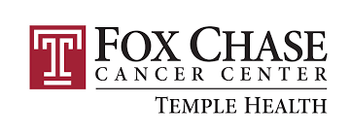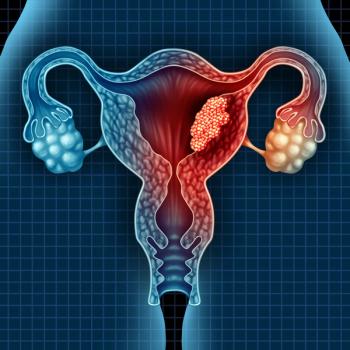
Patients with unresectable or metastatic melanoma treated with the universal cancer vaccine UV1 plus nivolumab and ipilimumab did not experience an improvement in progression-free survival vs nivolumab plus ipilimumab alone.

Patients with unresectable or metastatic melanoma treated with the universal cancer vaccine UV1 plus nivolumab and ipilimumab did not experience an improvement in progression-free survival vs nivolumab plus ipilimumab alone.

The FDA approved zanubrutinib plus obinutuzumab for the treatment of patients with relapsed or refractory follicular lymphoma after receiving 2 or more lines of systemic therapy.

Nivolumab plus cisplatin and gemcitabine received FDA approval for the first-line treatment of adult patients with unresectable or metastatic urothelial carcinoma.

Patients with phlebotomy-dependent polycythemia vera, a type of myeloproliferative neoplasm, treated with rusfertide experienced greater responses compared with those treated with placebo.

The antibody-drug conjugate inotuzumab ozogamicin was approved by the FDA for the treatment of patients aged 1 year and older with relapsed or refractory CD22-positive B-cell precursor acute lymphoblastic leukemia.


An oncology nurse and pharmacist discuss the multidisciplinary approach to administering TIL therapy in patients with advanced melanoma.

Although frontline treatment with lenvatinib plus pembrolizumab improved ORR and PFS, it did not improve OS when compared with placebo in patients with head and neck squamous cell carcinoma.

Patients with FIGO stage IV ovarian cancer did not experience additional complications or worse survival with HIPEC compared with those with stage III disease.

Patients with metastatic urothelial cancer treated with frontline maintenance therapy with avelumab following platinum-based chemotherapy in the real-world setting had similar outcomes as observed in the JAVELIN Bladder 100 trial.

Even though wearable technology can track symptoms and physical activity, among other information, in patients with cancer, more research is needed to determine how it all can benefit the management of these patients by oncology nurses.

Patients with hematologic malignancies who received Orca-T improved survival rates compared with PTCy in those receiving myeloablative conditioning, according to findings from a retrospective analysis.

An orphan drug designation has been granted by the FDA to ocifisertib as a potential treatment option in acute myeloid leukemia.

Priority review was granted by the FDA to a supplemental new drug application for adagrasib plus cetuximab for the treatment of advanced KRAS G12C–mutated colorectal cancer.

Amivantamab was approved by the FDA as first-line treatment of patients with locally advanced or metastatic NSCLC with EGFR exon 20 insertion mutations or as therapy for those whose disease progressed on or after platinum-based chemotherapy.

Ropeginterferon alfa-2b has been listed as a preferred first-line cytoreductive therapy by the National Comprehensive Cancer Network for patients with polycythemia vera.

Treatment with neoadjuvant tislelizumab plus platinum-based doublet chemotherapy, followed by surgery and adjuvant tislelizumab, improved event-free survival in patients with resectable non–small cell lung cancer.


Immune engager therapies, according to a retrospective study of real-world patients, had the best rates of responses and progression-free survival in patients with multiple myeloma whose disease relapsed after treatment with idecabtagene vicleucel.

The label expansion for ibrutinib with an oral suspension formulation has been approved by the FDA in all current indications including Waldenström macroglobulinemia, chronic lymphocytic leukemia/small lymphocytic lymphoma, and chronic graft-versus-host disease.

New research out of VCU Massey Comprehensive Cancer Center and VCU Health Pauley Heart Center indicates that survivors of childhood cancer are at a significantly higher risk of death following a major cardiovascular event — including heart failure, heart attack or stroke — than the general public.

An expert discussed how the benefits of mindfulness in patients with cancer can also be applied to oncology nurses.

Patients with relapsed/refractory chronic lymphocytic leukemia or small lymphocytic lymphoma treated with lisocabtagene maraleucel experienced durable responses.

Oncology nurses can advocate for patients with cholangiocarcinoma to participate in on-going clinical trials with tinengotinib.

The antifungal prophylaxis azoles did not impact the safety and efficacy of ruxolitinib in patients with graft-vs-host disease.

During a Community Case Forum, Tiffany Bostwick, P.A., discussed how immunotherapy for advanced endometrial cancer has contributed to improved results compared with the previous standard of care.

Patients with GVHD treated with ruxolitinib plus belumosudil experienced an overall response rate of 55%, which may suggest an interaction between inflammatory pathways.

The FDA is currently reviewing a BLA that seeks the approval of datopotamab deruxtecan as a therapeutic option for pretreated nonsquamous non–small cell lung cancer.

Compared with placebo, ruxolitinib cream significantly improved body surface area in patients with cutaneous graft-vs-host disease in a phase 2 trial.

It may be feasible to use brexucabtagene autoleucel for the treatment of patients with relapsed/refractory B-cell acute lymphoblastic leukemia with central nervous system involvement.